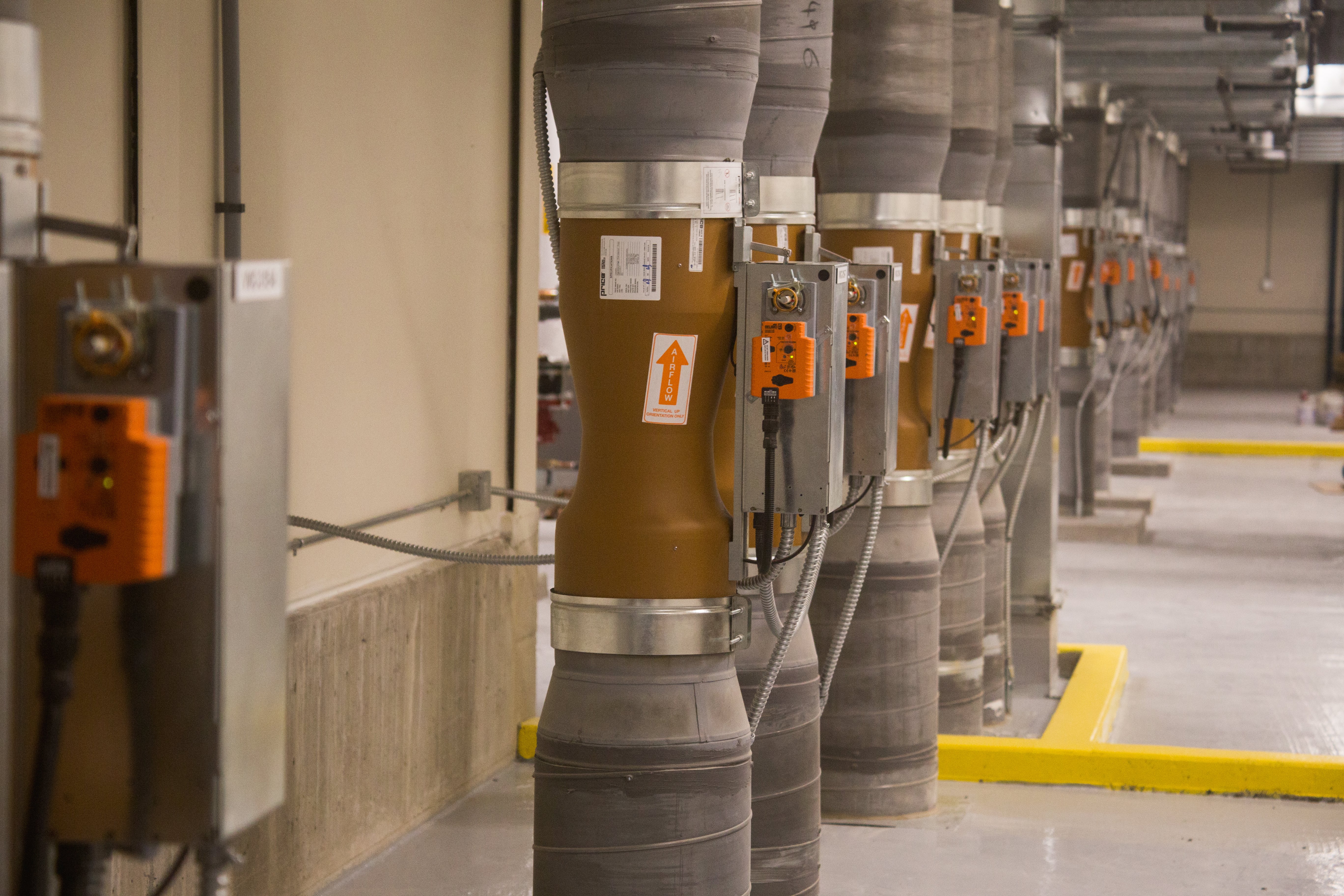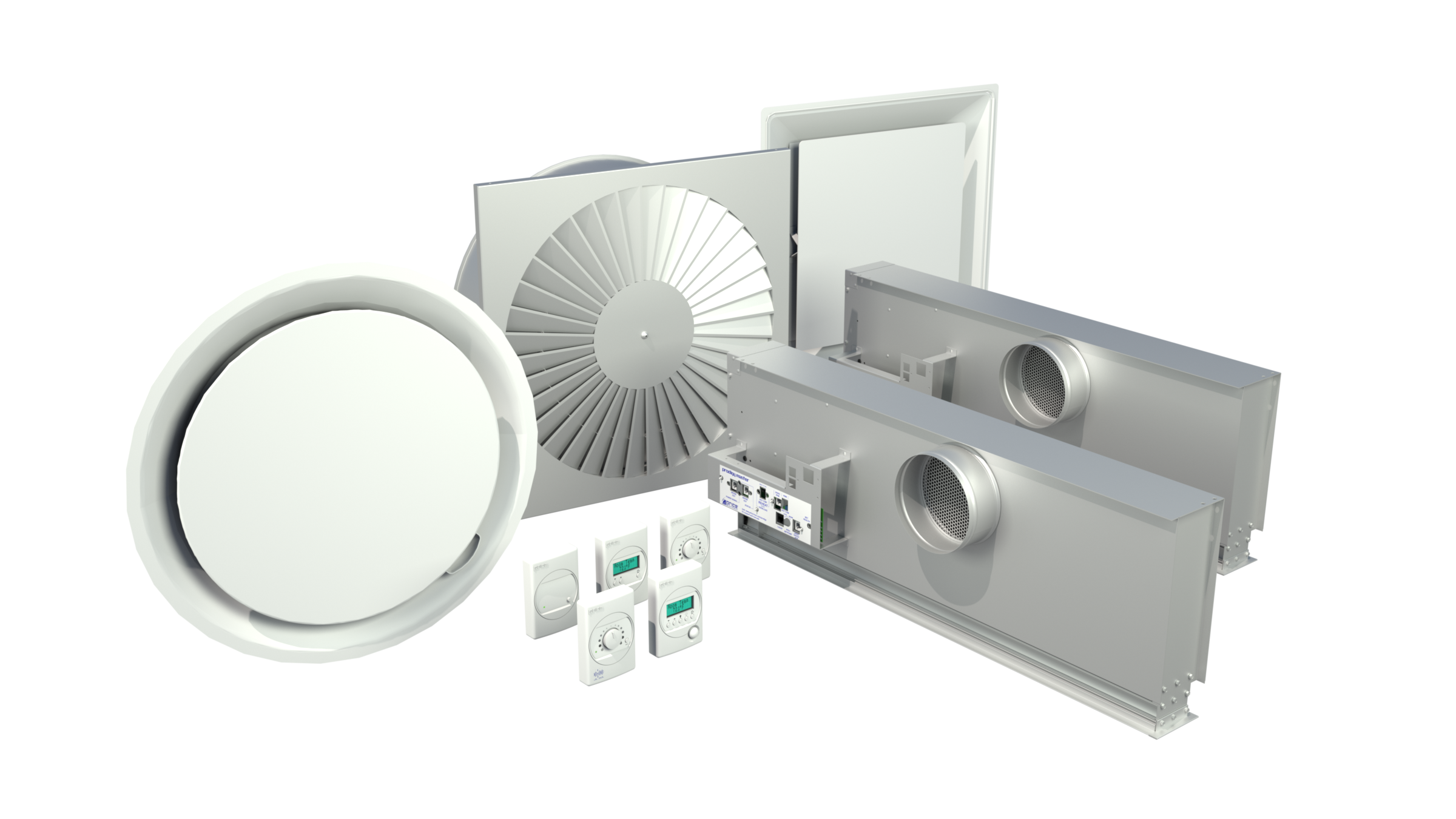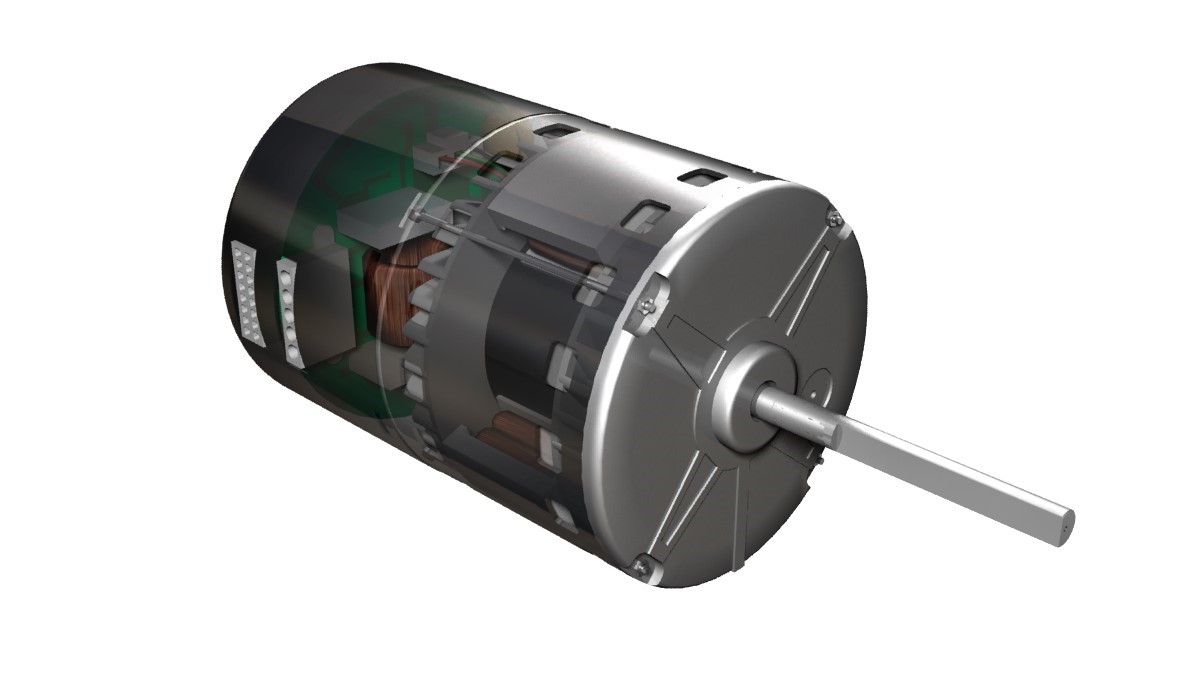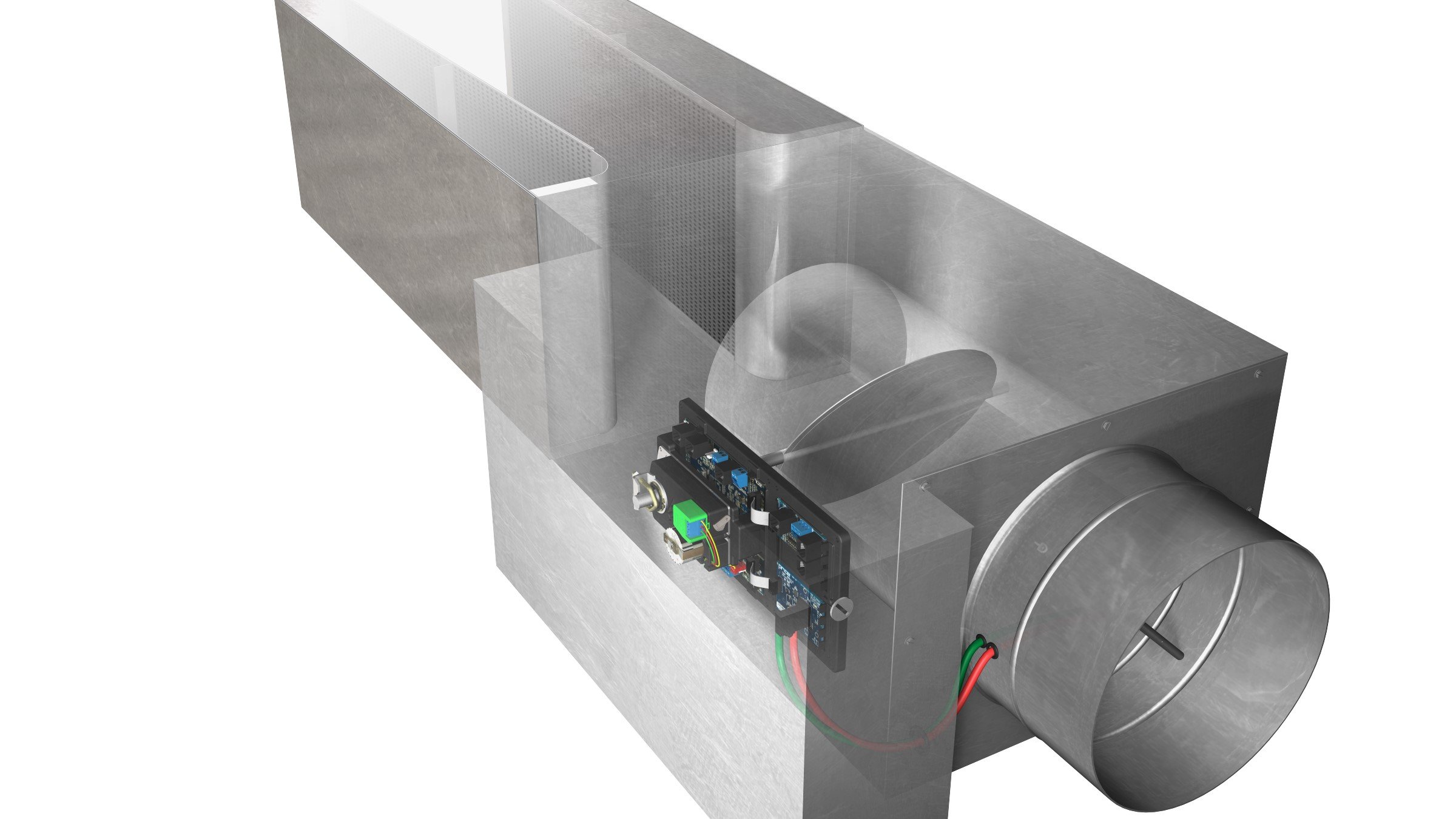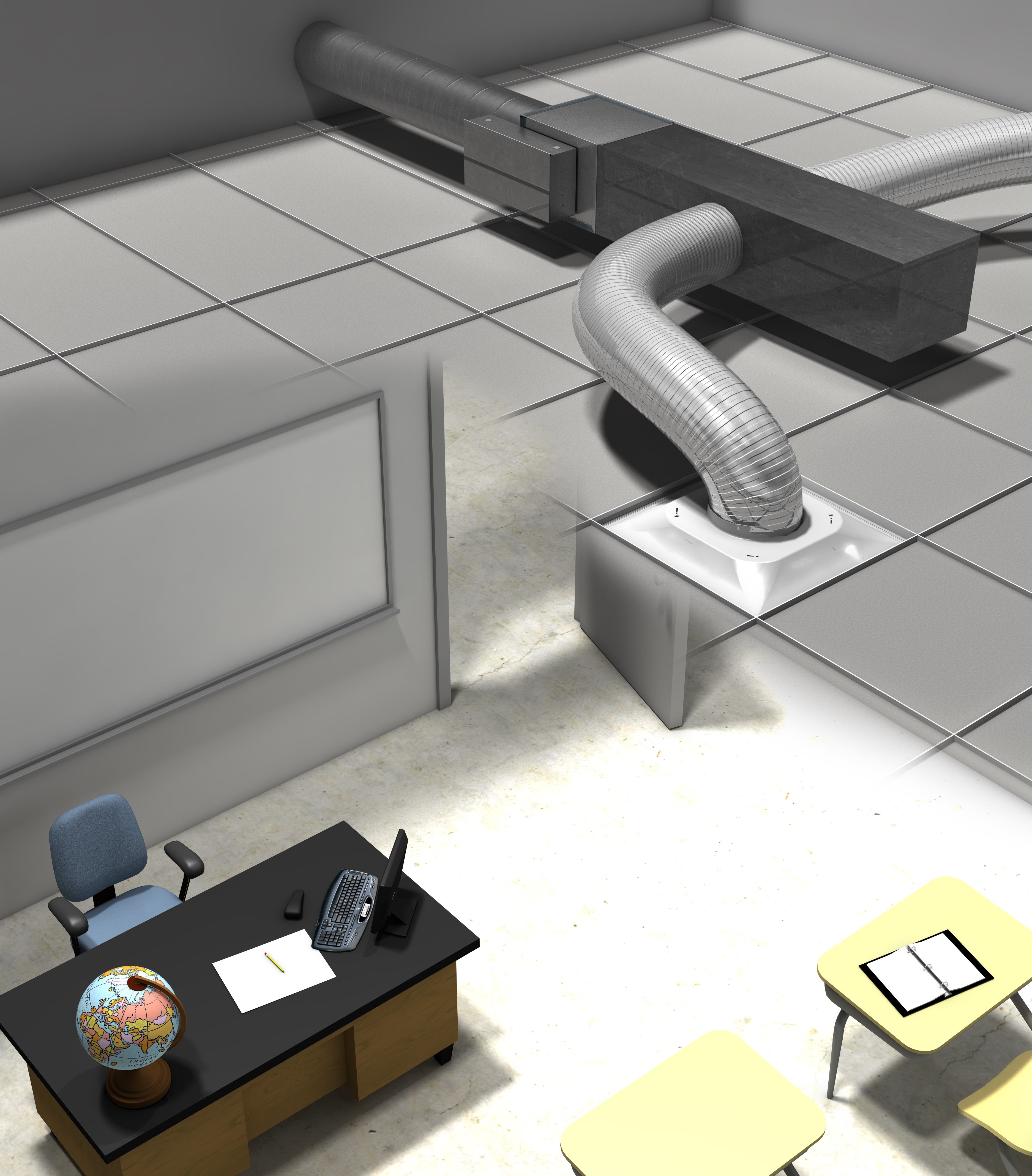Precise and Accurate Airflow Control
Venturi valves are devices designed to control airflow for room pressurization and fume hood air containment. They are most often used in spaces that require precise and accurate airflow control, protecting occupants from hazardous airborne gases and particles through proper ventilation.
Read More
Topics:
Static Pressure,
HVAC Fundamentals,
HVAC,
Engineering,
Design Engineering
An Energy-Efficient Solution for Small-Zone Control
A variable air volume (VAV) diffuser is essentially a ceiling diffuser with a built-in VAV damper and thermostat. Despite its simplicity, this device comes with many benefits and is an effective way to create small-zone comfort for building occupants.
Read More
Topics:
GRD,
Diffusers,
Thermal Comfort,
HVAC Fundamentals,
HVAC,
Engineering,
Design Engineering
Providing Terminal Units with Energy Efficiency and Control
Fan-powered terminal units use a motor and blower assembly to handle high levels of external static pressure, which enables the product to serve long duct runs and multiple air outlets. Using a motor within an assembly allows for smaller air handling units and gives the terminal unit the ability to tolerate variability in the heating and cooling requirements of exterior zones.
Read More
Topics:
Terminals,
HVAC Fundamentals,
HVAC,
Engineering
Optimal Sound Reduction for Terminal Units
Terminal units influence a building occupant’s experience through heating, cooling and acoustics. Price offers attenuators and silencers as two different methods to reduce a terminal unit’s operating sound level. An attenuator reduces sound levels by utilizing a section of duct lined with acoustical media whereas a silencer utilizes both baffling and acoustical media to break sound waves and reduce the sound level leaving the unit. Although attenuators may suit a project depending on its acoustical requirements and pricing, silencers offer optimal sound reduction.
Read More
Topics:
HVAC Silencers,
Terminals,
HVAC Fundamentals,
HVAC
An Essential Design Consideration for Mechanical Engineers
Pressure drop – the difference in pressure between two points in a fluid-carrying system – is one of the most critical design considerations for air distribution equipment in the HVAC industry. The problem with pressure drop for terminal units is that there are a number of metrics that are often confused with one another despite referring to different performance variables. These include static pressure drop, velocity pressure drop, pressure drop associated with acoustics and pressure drop associated with accessories.
Read More
Topics:
Pressure Drop,
Terminals,
HVAC Fundamentals,
HVAC,
Engineering,
Design Engineering


